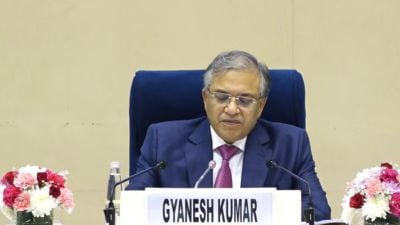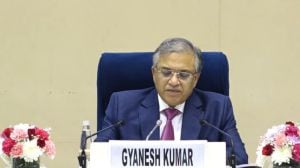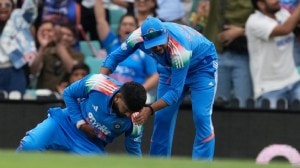India will harmonise its stance but wont compromise
What should come out of the WTOs Doha Round must be a rule-based,multilateral trade regime that is fair and equitable....
What should come out of the WTOs Doha Round must be a rule-based,multilateral trade regime that is fair and equitable and also addresses the legitimate concerns of the poor and developing countries,commerce and industry minister Anand Sharma told Shruti Srivastava in Moscow. Excerpts:
It is reported that there was little movement in talks at Geneva after Delhi.
I think it is a bit overstated. Delhi broke the logjam that was there for 15 months. This was the first meeting where representative groups met. We are very clear that we were not going to discuss substance…substantive matter was to be discussed at Geneva. What actually happened in Geneva was that working groups met on agricuture,non-agriculture market access and services. The chair of the three working groups have formulated a work plan. Now negotiations will proceed as per the work plan. They have also agreed that for three months from 7-10 days every month,they will meet. This is progress. Look at it,on September 2,senior officials met in Delhi,the ministerial did two things it brought together all stakeholders,G33 plus the key interlocutors. It was a microcosm of WTO. And the ministerial by consensus gave a directive to senior officials to return to negotiations. You cannot expect every thing to be sorted out in the first engagement itself.
But have you seen some softening of stance by the major players? And India?
We have been discussing this. Its not the question of softening of stand. What should come out from this round is a rule-based,multilateral trade regime that is fair and equitable and one that addresses the legitimate concerns of the poor and developing countries. That is the broad area..now with negotiators we will go all way. Opening of markets is not one way. We are committed to protect the interests of poor and developing countries. But one thing that needs to be put in proper perspective: it is a multilateral process,there are 153 countries negotiating a range of issues. Agriculture is just one sector. You have services and industrial sectors and countries negotiating on these sectors are coming from different level of development. Therefore,a middle meeting ground has to be negotiated. Positions are harmonised in negotiations to achieve greater convergence and there is a difference between harmonisng and compromising. Let the negotiators do their job. We have full trust in our negotiators.
The G20 in Pittsburgh gave a strong message against protectionism. But there are increasing instances. India too doesnt shy away from imposing a large number of anti-dumping duties.
The WTO itself has provisions for safeguard — countervailing and anti-dumping duties. So this is not in violation or conflict with the WTO agreement. Even when you have bilateral trade agreements or regional free trade pacts,the sovereign rights of nations remain. But they have to be used very sparingly. Many times,India has not invoked these. If the price at which countries export products is much less than the actual cost and if it has an adverse impact on the domestic product,then any country will go for CVD and anti dumping duties.
What is your realistic assessment. Are countries willing to sort out the differences and arrive at a deal?
I remain an optimist. The US came to Delhi for the meeting. The meeting could be held because all key interlocutors consented. They participated,named their negotiators. I had said that this was titled as re-energizing Doha. As I said all countries have their own constraint and challenges and still when they are engaged in a negotiation,I remain optimistic.
India Inc has concerns in certain sectors such as automobiles in the Asian FTA.
You see,we are talking of integrating with a region where the annual trade is $1.5 trillion. Commerce is two way. Even if you try to take 10 per cent of the ASEAN trade,look at the trade and look at the volume and value. We are an emerging economic power,we must have the self confidence to engage with the outside world. Our share of the global trade is very low and we have to increase the pace,the share,both in volume and value. The Asean pact it also very much in sync with our Look East policy. The Asean region is extremely important. When you engage with the region you have to see the strategic importance. Eventually,India has to be a major player in integrating the larger Asian economies and we are moving in that direction.



- 01
- 02
- 03
- 04
- 05




























